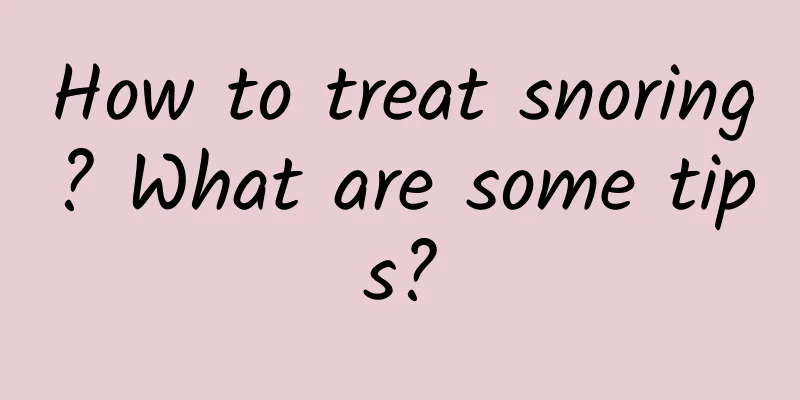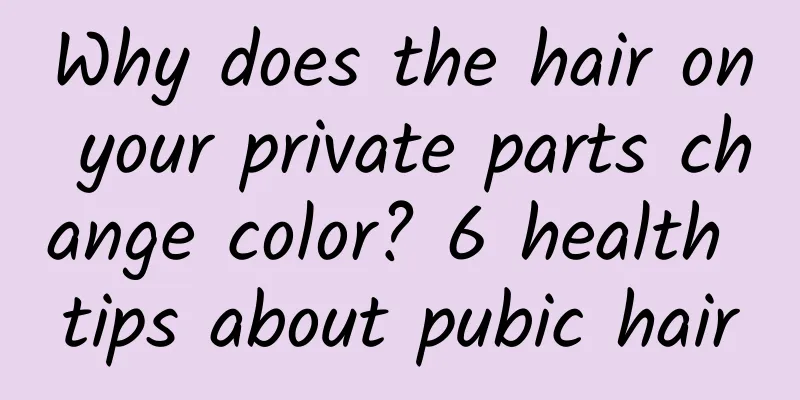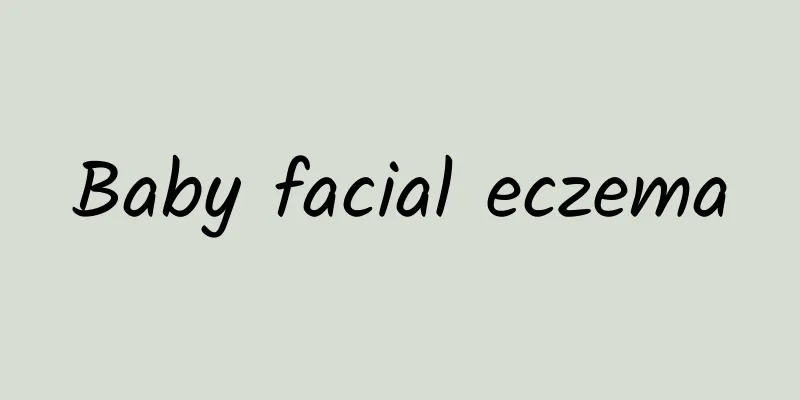Can patting your armpits really detoxify?

|
Can patting the armpits really detoxify? Many people don’t quite understand this question. The armpits are rich in sweat glands, sebaceous glands, and lymph. The lymph can kill bacteria and disinfect, and has a protective effect on the human body. Patting the armpits is very similar to traditional Chinese medicine massage. It can relax muscles and activate blood circulation, and has a detoxifying effect. Let’s take a closer look at whether patting your armpits can really detoxify. 1. Patting the armpits - relax the chest, calm the mind, and harmonize qi and blood There is an acupuncture point in the armpit called Jiquan Point, which is located at the apex of the armpit where the pulse is. Regular massage can relax the chest, calm the mind, and harmonize qi and blood. From the perspective of modern medicine, the armpits are rich in lymphatic tissue, and regular massage can promote blood circulation and enhance immunity. The massage method is as follows: cross your arms in front of your chest, press the opposite armpit with both hands, and massage and knead moderately with your fingers, each time for about 3 minutes; then, raise your left hand, and pat your left armpit with your right palm, then raise your right hand, and pat your right armpit with your left palm, 30-50 times each time, and repeat this operation 5 times. To prevent and treat heart disease, often massage the Jiquan health point in the armpit. Traditional Chinese medicine believes that: “The heart controls blood, and the lungs control power.” Heart disease is the number one killer of human health. One-third of deaths worldwide are caused by heart disease. Jiquan point is the starting point of the Hand Shaoyin Heart Meridian. It is connected to the heart and concentrates many nerves and blood vessels related to the heart. Therefore, plucking the Jiquan point can transmit stimulation to the heart, which has two major functions: health care and first aid. For people who suffer from insufficient blood supply to the heart and frequent symptoms of palpitations and heart pain, frequently plucking the Jiquan point is a simple and easy health care method. 2. Patting the elbow pits - promoting qi and blood circulation, dispersing blood stasis and removing evil spirits The cubital fossa is a triangular depression in front of the elbow joint. It is an area with dense meridians, through which the lung meridian, pericardium meridian and heart meridian pass. Regular massage can help promote qi and blood circulation, disperse blood stasis and eliminate evil. "Lingshu Xieke" says: "If there is evil in the lungs and heart, the qi will remain in the elbows." People with heart or lung diseases can often feel a tender spot in the elbow area, and they will cry out in pain if they are touched lightly, but ordinary people do not have this problem. The most convenient way to improve the condition is to pat it so that the evil blood stasis can be dispersed and the positive energy can be restored. In addition, the lungs control the skin and hair, so patting the elbow pits can also regulate skin problems. If you have acne caused by damp heat, or if your skin is easily itchy in the winter, you can also pat the elbow pits more to allow the lung qi to flow smoothly, so that your skin and hair will naturally be moisturized and free of worries. If you have bloating due to overeating, scraping the middle point of the elbow pit can relieve the symptoms. Sometimes, if there is no scraping device, patting can also be effective. Method: Sit or lie on your back, stretch one upper limb with the elbow facing up, and use the four fingers of the other hand to tap the center of the elbow. Use your empty palm to apply force, and tap alternately on both sides 100 times each, with the force increasing from light to heavy. Boys should tap their left elbow first and then their right elbow, while girls should do the opposite. This method can be used as an auxiliary treatment for sore throat, yellow phlegm and asthma, cough and hemoptysis, irritability and heat in the heart, oral ulcers, insomnia and nightmares, etc. It is best to pat the skin once or twice a week. If you are afraid of pain, use a dry towel to pad the skin and then pat to relieve the pain. For people who are seriously ill or weak, you can just push, rub or gently pat until it turns red. This can warm the heart and lungs, which is equivalent to a "tonic" method. Remember to drink a little warm water before and after the patting. It is best to rest quietly for two hours after the patting, and be sure to avoid wind and cold water. |
>>: Excessive sweating under the arms without odor
Recommend
Contraindications of Wulingzhi
Most people may not have heard of Wulingzhi, but ...
My tailbone hurts after sitting for a long time
Many people, such as white-collar workers, driver...
What should I do if my ankle is sprained and the instep is swollen?
If you sprain your ankle and your instep is swoll...
Symptoms of cystitis in women
Cystitis is a very common disease. This type of d...
What are the symptoms of Qi deficiency cold? How should you take care of yourself when you have a cold?
Cold is a common infectious disease in life. It a...
Symptoms of excessive stomach acid, early treatment
Gastric acid helps us digest food. If there is to...
Who should eat Tiepi Fengdou?
As a precious Chinese medicine, the Iron Bark Map...
Can pregnant women eat bayberry?
During pregnancy, female friends are very cautiou...
What can't you eat when you are pregnant with a tumor?
Many women do not undergo prenatal examinations b...
How to remedy the horizontal lines on the root of the nose
There are horizontal lines on the bridge of the n...
How to eat the placenta most nutritiously
Eating the placenta sounds a bit scary, because t...
How to lose weight the easiest way, four simple ways to lose weight
Becoming more beautiful and thinner is the pursui...
Symptoms of myocardial damage in newborns
We all know that babies are the cutest but also t...
What is athlete's foot fungus most afraid of?
Many people think that athlete's foot cannot ...
What medicine is good for Norovirus
Norovirus often causes diarrhea in children, and ...









